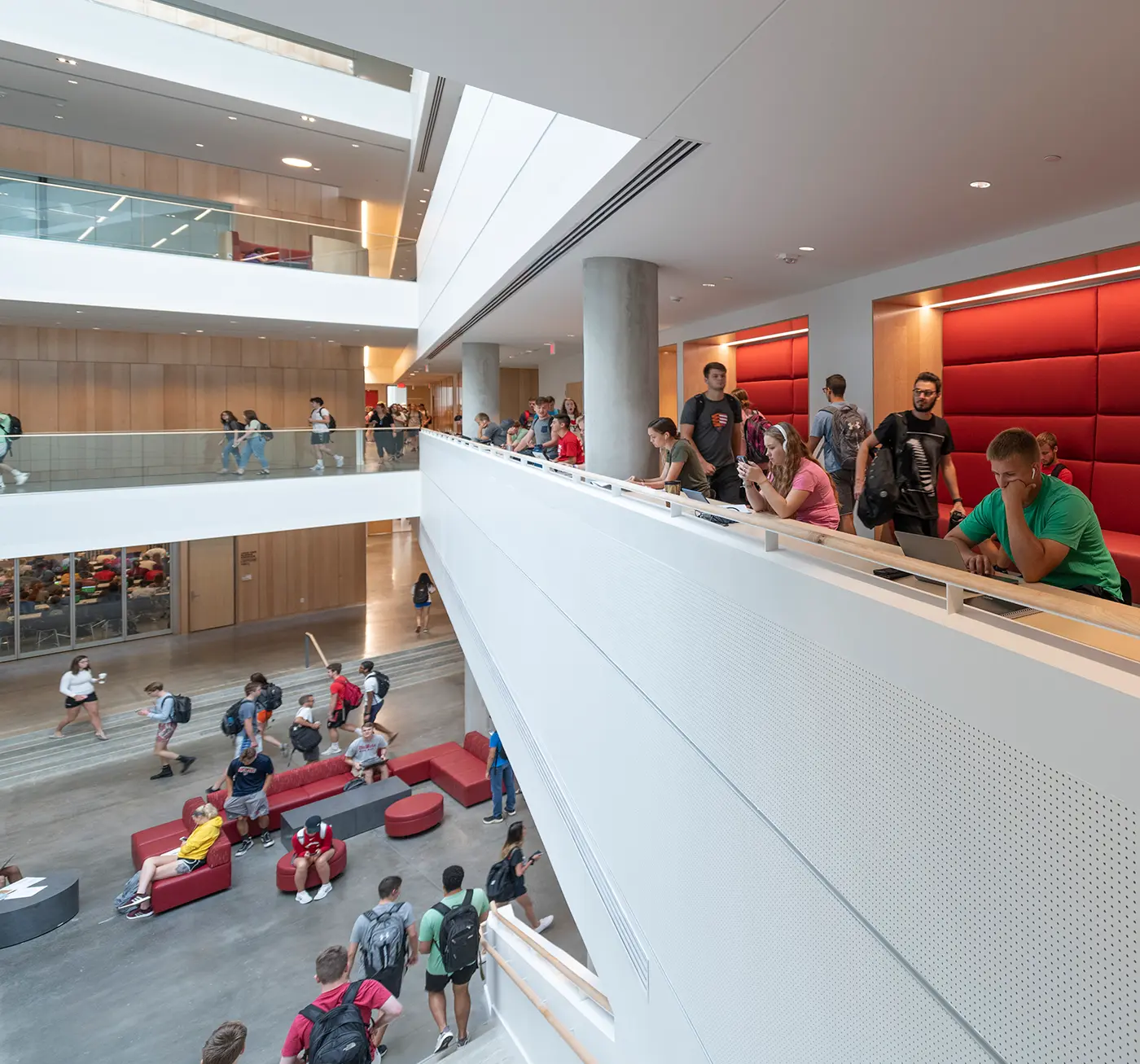Designing for social interaction means emphasizing the spaces in between

Part of the joy of life in buildings lies in the unexpected meeting - chatting with a colleague in the kitchen, meeting a neighbor in the hall. Henning Larsen's PhD Fellow Krister Jens blends data and design to illuminate exactly how we can design for social interaction.
Working in the digital age has, for a long time now, meant that anyone can work from anywhere. But as ‘anywhere’ has shrunk to ‘home’ for so many of us, the benefits of a shared home base are more clear than ever. Switching to home work has not just meant losing the sharp efficiency of face-to-face work, but also losing the pleasure of casual interactions. The chat by the coffee machine, the greetings in the hallway – they may not necessarily be in the job description, but these casual social interactions are essential parts of our working lives.
One of the key places these interactions happen are in circulation spaces – both within buildings and outside in the public realm. As designers, we need to think of circulation spaces as more than a means to an end, a way from ‘a’ to ‘b’. How can we shape circulation spaces to be hubs for sharing and engaging with ideas, inclusive environments where individuals can unfold their potential? For this, we are about to understand how spaces influence the different types of human interaction, which broadly speaking include formal and informal interaction, work-related and non-work related, programmed or un-programmed. The question whether different activity types can be compromised and supplemented with each other in open circulation spaces will help to test the performance of our spaces on user needs.
At the University of Cincinnati’s Lindner College of Business, we used these questions as a driving force in our design, turning the school into an open, publicly accessible social hub. No less than 40% of the building is dedicated to flexible circulation spaces.
Over the course of our post-occupancy research, we’ve discovered that these spaces have become extremely attractive to students from across the campus. On a regular day, more than 5,000 people enter and exit the facility – of which 20% come from other faculties to work and socialize in Lindner. The potential for design to increase interdisciplinary exchange between students and faculty from across campus is evident. Where the old building had long corridors and few breakout spaces, the new building offers space specifically geared towards the kind of casual interaction crucial to work and education.
But good places for interaction aren’t made by space alone. The large variety of seating options (400 places of more than 10 types of furniture) spread out over the 60,000 ft2 of publicly accessible circulation at Lindner supports a range of work and leisure activity for both individuals and groups. Having spaces to support this range of informal activity has eased pressure on meeting and seminar room and helped to reduce empty space in the building. The new atrium, for instance, turned out to attract most occupants among the four monitored spaces, registering (comparatively) low occupancy durations but high interaction levels. Working desks spread throughout the building have shown to support individual and pair-work, while groups of every size (from individuals and pairs to larger cohorts) used the cafeteria. This new degree of flexibility in the usage of space – and the opportunity for engagement and retreat within the same spaces – make students select spaces according to their individual needs.
At the start of the last century, modernists pinned their hopes on the ability of architecture to influence health. And while buildings can’t prevent disease, they can have a massive effect on our general wellbeing, particularly where it relates to mental health and social balance. Thoughtful design has never been a more essential.



